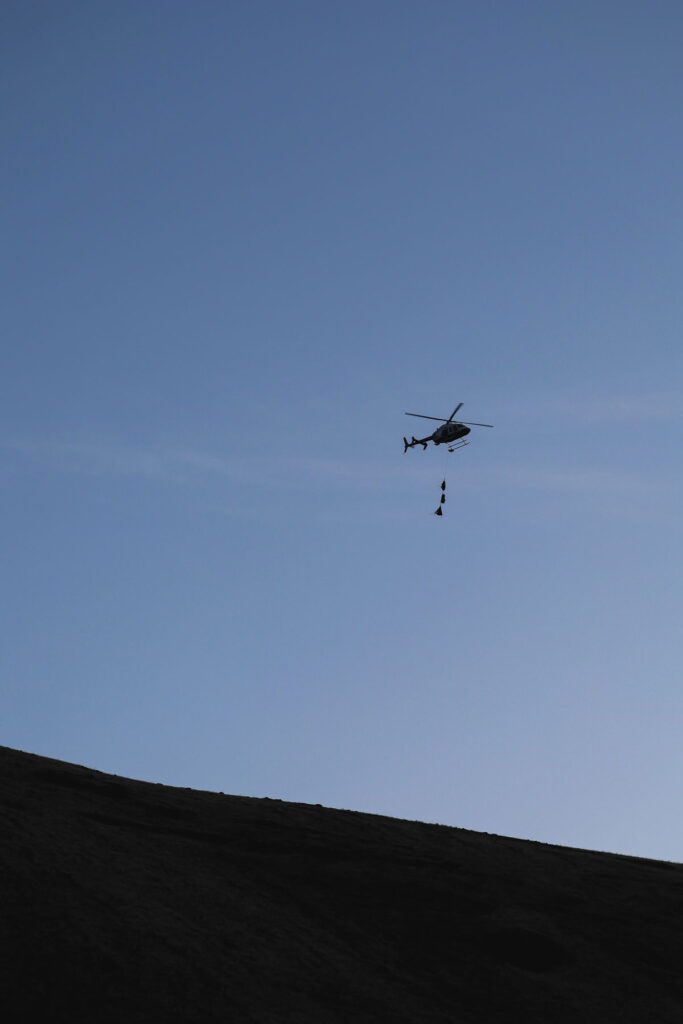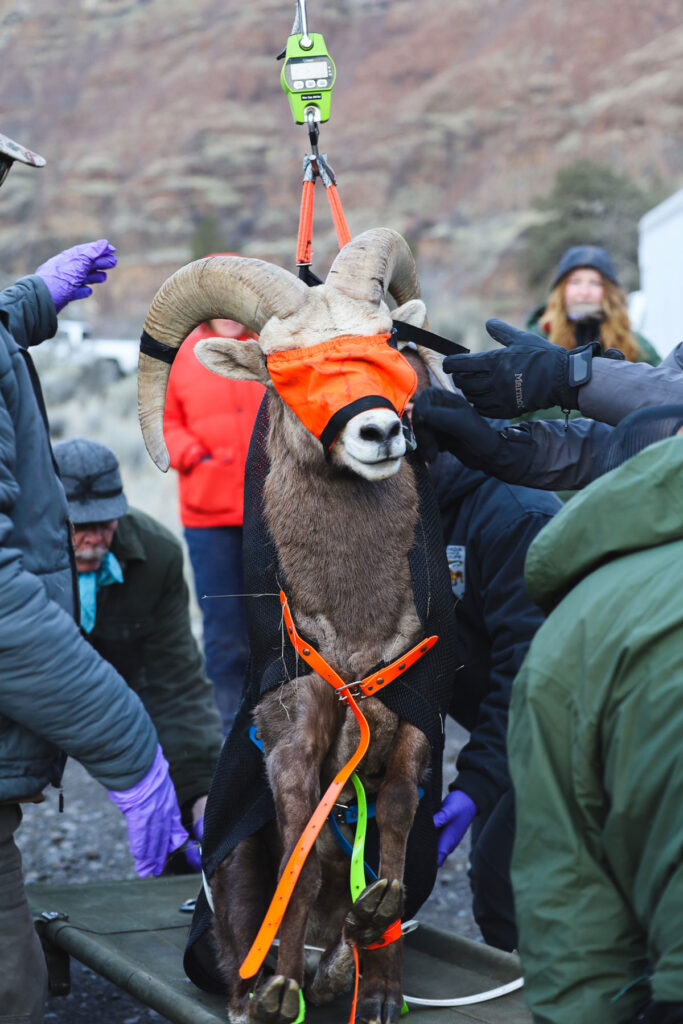TRCP’s Oregon and Nevada field representatives volunteered at a recent California bighorn relocation operation
BY Tristan Henry
TRCP.org
A train of headlights and dusty-red taillights cut the pre-dawn dark as they rolled north from Maupin and downstream along the Deschutes River Access road. Our convoy, comprised of state-badged vehicles from both Oregon and Nevada and private rigs, rumbled to a halt at the Beavertail access site and quickly set about deploying various trailers, tables, and tools. Tangible excitement was suspended in the cold morning air, surrounded by the focused silence of folks preparing to work. Within moments, the crew had transformed the graveled boat ramp into a field veterinary station that rivaled any backwoods veterinary clinic. No sooner had the sun begun to crest the canyon wall when the helicopter’s blades split the calm to briefly touch down.
The reason for the early rendezvous was to capture and relocate California bighorn sheep from Oregon to Nevada. I, along with my TRCP colleague, Nevada field representative, Carl Erquiaga, joined the Oregon Wild Sheep Foundation and Nevada Bighorns Unlimited volunteers to assist biologists and wildlife managers from the Oregon Department of Fish and Wildlife and the Nevada Department of Wildlife.
In the Lower Deschutes, some 900 California bighorns call the canyon home—a remarkable conservation success story, embodying resilience and the power of collaborative wildlife management. Once widespread across the state, bighorn sheep populations were driven to near extinction in the 19th and early 20th centuries due to habitat loss, overhunting, and diseases introduced by domestic sheep. By the early 1900s, bighorn sheep had vanished entirely from Oregon, Idaho, and Nevada. In the 1950s, efforts to reintroduce the species began, with state agencies and partners working tirelessly to restore these iconic animals to their native range. Transplants from neighboring states and Canada re-established herds, and through ongoing management, Oregon’s bighorn numbers are now strong enough to pay it forward.

Numerous sporting organizations whose missions revolve around bighorn sheep have risen to the challenge across the western United States and Canada to help bolster wild sheep conservation. National organizations like the Wild Sheep Foundation and many state-based groups like the Oregon Wild Sheep Foundation and Nevada Bighorns Unlimited hold fundraising events every year and contribute millions of dollars to wildlife agencies which have expanded their bighorn efforts. Many of these groups also provide much-needed volunteer labor for projects such as sheep relocations. In many cases those dollars and volunteer hours can be matched with federal funding through the Federal Aid in Wildlife Restoration Act of 1937. Without these groups, projects like this would be nearly impossible to carry out.
The helicopter roared up the canyon while the crew scanned rimrock bands for the unmistakable white rumps of bighorns. When groups were spotted, the pilots charged the sheep over steep terrain and the obvious pop from the net gun signaled a success. Not long thereafter, a daisy chain of blindfolded ewes descended from the sky where they were met with stretchers and gloved hands.
Whispers replaced conversation as each ewe was carefully carried to the processing area where they were handled reverently and deliberately. Vitals were recorded. Weight, temperature, and other measurements of body and reproductive condition were jotted in field notes. Blood and fecal samples were collected for analysis. Each sheep was fitted with a GPS collar and given a mild sedative to keep them calm in the trailer, as well as select vitamins and minerals to fortify them on their journey. Don Whitaker, ODFW’s chief ungulate biologist, moved through the scene with the quiet confidence of a man who’d spent decades working with wild animals and understood the dedication required to conserve them. Watching him work was like seeing a musician with their instrument, his passion and skill apparent with every gesture.
As the last trailer pulled away and the canyon settled back into its winter stillness, I was struck by what I had witnessed. The relocation done here was indeed wildlife management, but also a declaration of work beyond the status quo. This work is the legacy of conservation in North America: a system where hunters and anglers fund and passionately work for the future of species like the California bighorn.





